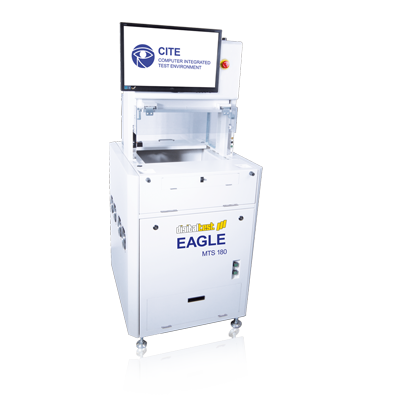News
News Press Company
„ECO on the Fly“ – New test solution for obsolescence

Digitaltest introduces "ECO on the Fly", a new concept on how to continue testing boards during times of supply chain interruptions and necessary board design changes caused by obsolescence of components.
Supply chain disruptions, delivery stops and obsolescences of products are causing major problems for many electronics manufacturers and EMS providers. Since the ongoing COVID-19 pandemic, the global supply chain has been severely affected. According to a recent survey by Dimensional Research and Supplyframe, 53 % of product launches have been delayed or cancelled due to COVID-19, 35 % have had to redesign products to replace components that are no longer available, and 37 % reported that component costs have increased. Change is the only constant - so a strategy is needed on how to respond flexibly to this change.
Supply chain problems causing design changes of PCBs
Design changes to electronic assemblies, so-called ECO's (Engineering Change Orders) are necessary when discontinued components have to be replaced and the geometry of an assembly changes as a result. Now, not only the test program, but also the fixture must be changed manually and this is error-prone, time-consuming, costly and interrupts production. In the worst case, the fixture cannot be modified at all and a new fixture with a new test program must be created or ordered, resulting in even longer downtimes and costs. Because of these many component bottlenecks, it is also usually not just one electronically assembled PCB, but many different ones with respective fixtures and test programmes. The costs for this rise exponentially very quickly!
What is the alternative here? Fixureless testing on the Flying Probe?
Fixtureless testing with a Condor Flying Probe would in principle be a possible alternative, but the cycle times of a bed of nail test system with fixture are much shorter. This would be unthinkable in a production environment, especially for large quantities.
So what can you do if you are constantly faced with ECOs without investing a lot of money in fixture and test program adaptations and at the same time keep cycle times as short as possible?
With "ECO on the Fly", Digitaltest has developed a procedure that combines the bed of nail test with the flying probe test and in which C-LINK, the CAD/CAM software, works out the delta of the two layout BOM variants. With the data generated, the fixtures and programs can be modified and, as before, the boards can be tested on the bed of nail test systems and now only the delta still needs to be tested on a Condor Flying Probe. If the test program is a Digitaltest program, a test program can be automatically created here and the Condor Flying Probe now only contacts the nets that cannot be reached with the bed of nail fixture. The test results are now easily merged by barcode so that the PCB or panel gets a complete failure report.
This Flying Probe station can be set up both inline and stand-alone and can also be applied to existing fixtures from other bed of nail test systems on the market, as C-LINK is applicable independently of the test system software in use. You can now handle all ECOs that occur on different boards with just one new test station, the Condor Flying Probe. This allows flexible and fast reactions to obsolescence, supply chain problems and component bottlenecks in the future.
















